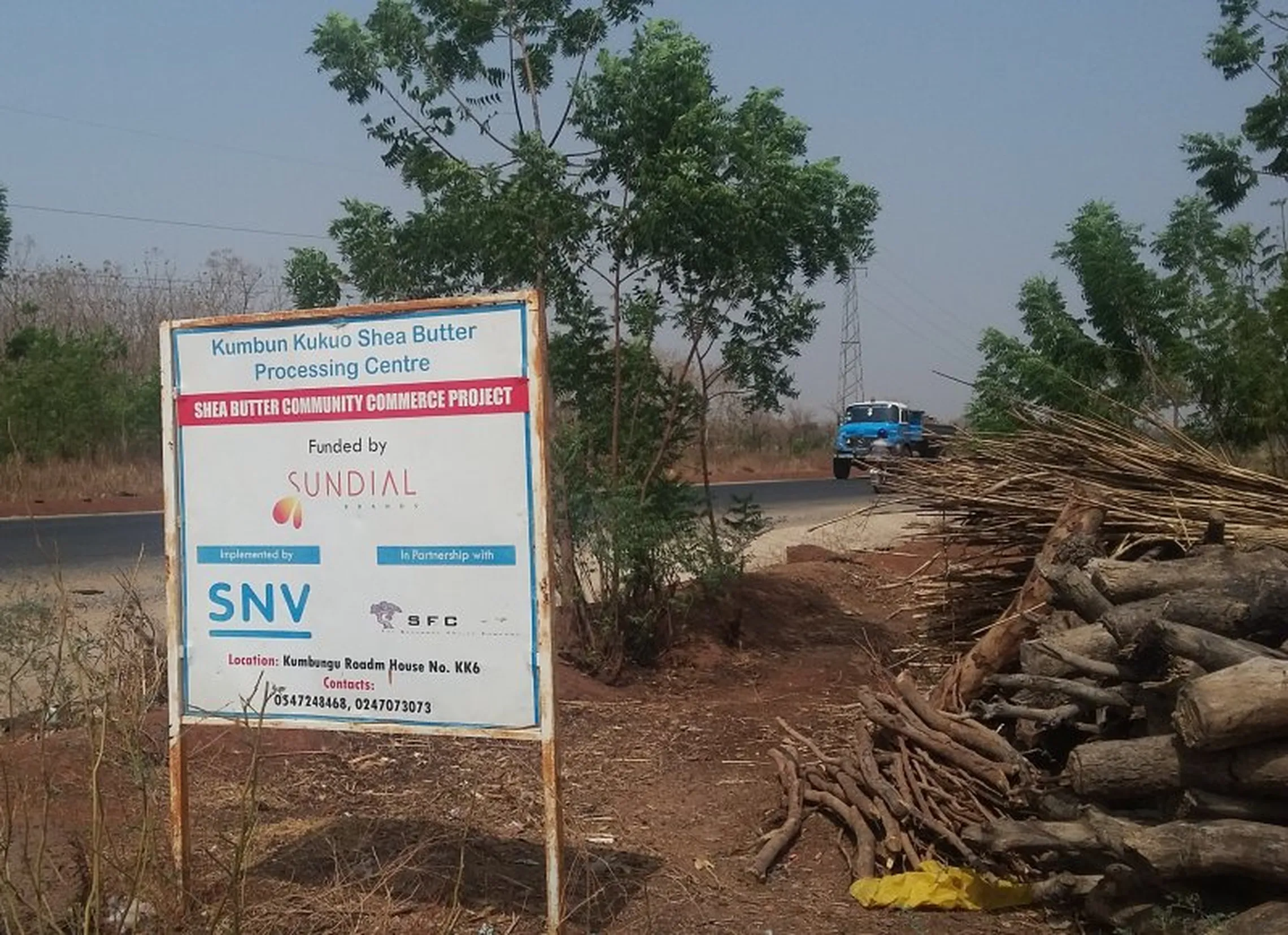She makes shea butter

Have you ever wondered what goes into your skin care products? Mostly chemical compounds, you might think. Many are based however on shea butter, a natural ingredient produced from shea nuts. I recently visited a shea butter producer cooperative that takes part in the SNV Shea Butter Community Commerce project.
In the grassy bushes around the fast growing Ghanaian city of Tamale, it's mostly women who produce shea butter. The land on which their trees grow is communal land, that is formally owned by the village chiefs. The women's situation is often uncertain. As the city expands, it is highly lucrative for the landowners to sell their plots for city expansion. The farmers will have to start all over again in a more remote area, plant new trees and wait for them to mature. Additionally, the quality of their product varies and is often low. This in turn limits the ability of companies to incorporate them as suppliers as they need consistent high quality shea butter for their own manufacturing.
The American company Sundial Brands asked SNV to work with several shea butter producer cooperatives in the Tamale area to improve the quality of their product with the larger aim to increase the income of the female shea butter farmers. Since we started working with them, several concrete improvements have been made.

The project site. See the firewood?
After harvesting, the shea nuts are spread out and dried. This used to be done directly on the ground or on the tarmac. Now the women use a cemented platform that has been built as part of the project.

The raised concrete platform built as part of the project
After cracking the nuts with a simple machine-crusher, the ladies used to cook them for hours at a stretch on an open fire. Now they know that only 40 minutes are needed to release the nuts' oils. Efficient stoves with chimneys prevent the women from inhaling smoke while stirring the mixture.

The efficient cookstoves on which the cracked nuts are cooked

Click on the photo to see how the butter is scooped from the mixture
Due to these changes, the quality of the shea butter has improved greatly and the ladies in the cooperative now have a guaranteed buyer, the Sundial Brands company. As a result, their incomes have significantly increased.
I ask them what they like most about their new situation. One lady replies without the slightest hesitation, "I can send my son to school now, with some money in his pocket to buy food. I no longer have to worry about him walking on an empty stomach." Another one adds, “I no longer need to roam the markets in search of customers, haggling about prices.”
And their men, how do they look upon your new situation? Laughter, "Oh, they like it all right! They don't have to spend money on food for the children. Now that we are taking care of these things, they want to use their money to build a proper house with cemented walls.”
It is good and hopeful to see how these women can help themselves with a bit of extra knowledge and a few improvements in their production process. Let's just hope there will be enough shea butter trees left for them to harvest. But even if they have to move their business in the future, they will take along the skills that they have acquired during the project.
Finally when I am about to leave and ask them if there is anything else they want to tell me, one woman stands up: "Yes! We can produce more than this here.” The palm of her hand indicates at the piles of shea butter in various stages of processing. “But we need more customers. Can you find us another international company that will buy from us?" The other ladies nod approvingly to add weight to her words.
I leave with a task at hand and since I take my role as a broker seriously, here we go: Anyone buying?

The women of the shea butter cooperative